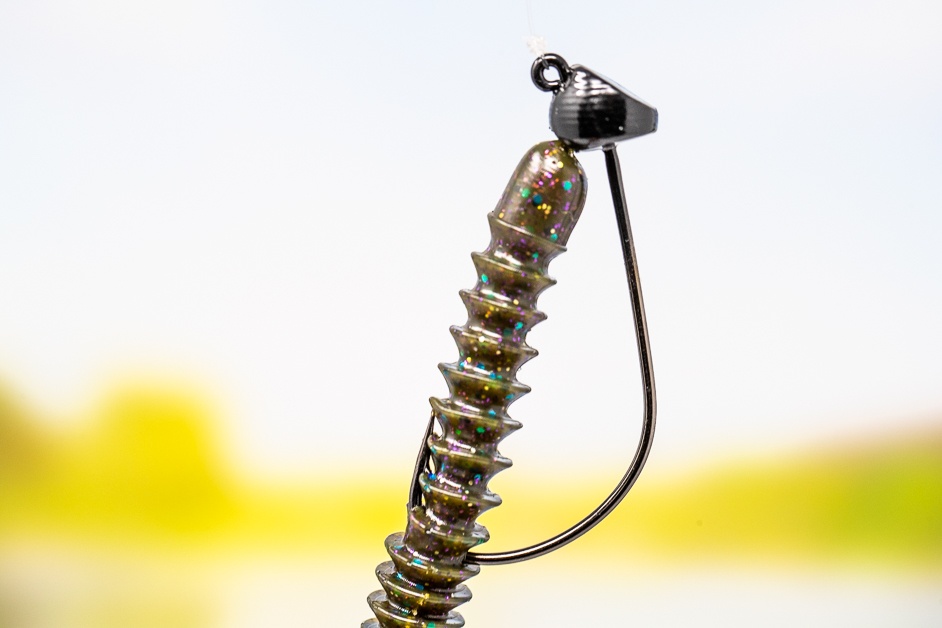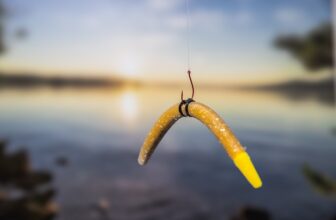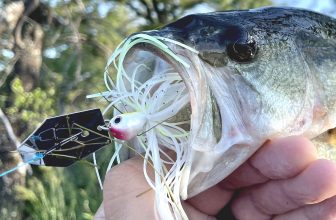
As an avid angler, I am always looking for new techniques to add to my arsenal. One technique that has been gaining popularity in recent years is shaky head jig fishing. In this article, I will introduce you to shaky head jig fishing, explain what it is, and when to use it. I will also provide tips and tricks for fishing with a shaky head jig, common mistakes to avoid, and the best locations and conditions for fishing with a shaky head jig.
Introduction to shaky head jig fishing
Shaky head jig fishing is a technique that has been around for a long time, but it has gained popularity in recent years due to its effectiveness in catching fish. The shaky head jig is a small, weighted jighead with a hook attached to it. The jighead is designed to be fished with a worm or soft plastic bait, which is rigged on the hook.
The name “shaky head” comes from the action of the bait when it is fished. The jighead is designed to be fished on the bottom, and the angler will shake the rod tip to make the bait move in a subtle, natural way. This technique can be very effective in catching fish that are finicky or not actively feeding.
What is a shaky head jig and when to use it
A shaky head jig is a small, weighted jighead with a hook attached to it. The jighead is designed to be fished with a worm or soft plastic bait, which is rigged on the hook. The weight of the jighead allows the bait to sink to the bottom, and the angler can then use a shaking motion to make the bait move in a natural way.
A shaky head jig is best used in situations where the fish are not actively feeding or are being finicky. This technique can be very effective in clear or shallow water, where the fish can see the bait more clearly. It can also be effective in deeper water, where the bait can be presented in a natural way.
Benefits of using a shaky head jig
One of the biggest benefits of using a shaky head jig is its versatility. This technique can be used to catch a variety of fish, including bass, crappie, and walleye. It is also effective in a variety of water conditions, including clear or stained water, and in different depths of water.
Another benefit of using a shaky head jig is its subtlety. The shaking motion of the rod tip creates a natural movement of the bait, which can be very effective in catching finicky fish. This technique can also be used to present the bait in a natural way, which can be very effective in clear or shallow water.
Shaky head worm selection and rigging
When it comes to selecting a worm for a shaky head jig, there are a few things to keep in mind. First, you want to select a worm that is the right size for the hook you are using. A worm that is too big or too small will not look natural and may not be effective in catching fish.
Second, you want to select a worm that has a natural-looking action when it is fished. This can be achieved by selecting a worm that is soft and pliable, and has a natural-looking color.
When it comes to rigging the worm on the shaky head, there are a few different ways to do it. One popular method is to thread the worm onto the hook and then bury the hook point in the body of the worm. This creates a weedless presentation, which can be effective in areas with a lot of vegetation.
How to fish a shaky head
Fishing a shaky head is a simple technique, but there are a few things to keep in mind. First, you want to cast the jig out and let it sink to the bottom. Once it has hit the bottom, you can start shaking the rod tip to create a natural movement of the bait.
It is important to remember that the shaking motion should be subtle and natural. You don’t want to create a lot of movement, as this can scare the fish away. Instead, you want to create a natural-looking movement that will entice the fish to bite.
Tips and tricks
One of the best tips for fishing with a shaky head jig is to use a light line. A light line will allow the bait to sink to the bottom more quickly, and will also allow you to feel more bites.
Another tip is to vary the speed of your shaking motion. Sometimes a slow, subtle movement will be more effective, while other times a more aggressive movement will be needed to entice the fish to bite.
Finally, it is important to pay attention to the bottom structure and water depth when fishing with a shaky head. The jighead is designed to be fished on the bottom, so you want to make sure you are fishing in an area where the bottom structure will allow the jighead to stay on the bottom.
Common mistakes to avoid when fishing with a shaky head jig
One of the biggest mistakes anglers make when fishing with a shaky head jig is using too heavy of a jighead. A heavy jighead can make the bait sink too quickly, which can make it look unnatural and scare the fish away.
Another common mistake is using too much movement when shaking the rod tip. This can create an unnatural movement of the bait, which can also scare the fish away. It is important to keep the shaking motion subtle and natural.
Finally, it is important to pay attention to the bottom structure when fishing with a shaky head jig. If you are fishing in an area with a lot of vegetation or other obstructions on the bottom, you may need to switch to a different rigging technique to avoid getting snagged.
Best locations and conditions for fishing with a shaky head jig
Shaky head jigs can be effective in a variety of locations and conditions. They are particularly effective in clear or shallow water, where the fish can see the bait more clearly. They can also be effective in deeper water, where the bait can be presented in a natural way.
When it comes to water conditions, a shaky head can be effective in both clear and stained water. In clear water, the natural-looking movement of the bait can be very effective in catching fish. In stained water, the subtle movement of the bait can still be effective, but it may be necessary to use a brighter-colored worm to make the bait more visible.
Shaky head variations and modifications
There are a few variations and modifications that can be made to a shaky head to make it more effective in certain situations. One common modification is to add a stinger hook to the jighead. This can be effective in situations where the fish are biting short, as it will increase the chances of hooking the fish.
Another modification is to add a scent to the bait. This can be done by adding a scent to the body of the worm or by using a scented spray on the bait. This can be effective in situations where the fish are not actively feeding or are being finicky.
Conclusion and final thoughts
Shaky head jig fishing is a simple but effective technique that can be used to catch a variety of fish in a variety of water conditions. By selecting the right worm, rigging it properly, and using a subtle shaking motion, anglers can entice finicky fish to bite. By avoiding common mistakes and paying attention to the bottom structure and water conditions, anglers can increase their chances of success. So next time you hit the water, give shaky head jig fishing a try and see how it works for you.
Are you ready to try out shaky head jig fishing? Share your experiences and tips in the comments below!








